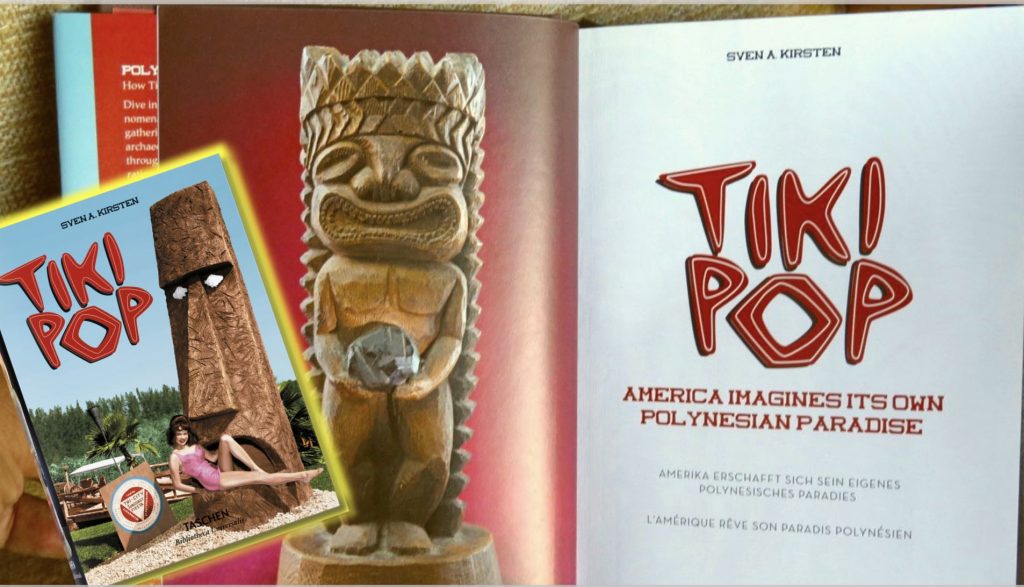A lot has been made about the impending closure and subsequent “saving” of Fort Lauderdale’s historic Mai-Kai Restaurant & Polynesian Dinner Show. Yes, we’re part of the bandwagon that went crazy last year when we heard the famous Tiki Palace had been flooded, damaged and closed…. We, along with many in the Tiki community feared that this Grande Dame of yesteryear was destined for the history books. And although it’s always sad to see one of our favorite places close, why did the possible closure of the Mai-Kai strike such a nerve? We’re in the middle of a Tiki renaissance, aren’t we? So surely something would eventually pop up to take it’s place, right?
WRONG! Nothing could ever replace this beautiful Polynesian playground, and for good reason. To find out why there’s such reverence for this place, let’s take a look inside SVEN A. KIRSTEN’s landmark book TIKI POP, a veritable bible and photographic map of the Tiki phenomenon. According to Amazon.com, Kirsten is an “urban archaeologist, Tiki sage, and author of earlier TASCHEN books, The Book of Tiki and Tiki Modern.”

In Kirsten’s TIKI POP, in the chapter titled GRAND TIKI TEMPLES, he writes this: “In the history of Tiki pop, there are those places that transcend all of the other Tiki places, large or small. One of these is the Mai-Kai in Fort Lauderdale, Florida, built by the brothers Bob and Jack Thornton in 1956. It is a virtual Taj Mahal of Tiki and stands today in its original form—which makes it the last grand Tiki temple still in existence…
“The 1960s were the high times of the swinging bachelor, personified by Hugh Hefner and this Playboy clubs. With its bevy of beauties, the Mai-Kai embodied a Tiki version of the Playboy lifestyle… the Mai-Kai was the island every man wanted to be shipwrecked on. although today’s male is more pragmatic, the Mai-Kai is still a place to dream.”
Here’s hoping it remains a place to dream for many, many years to come!
From the Mai-Kai website:
The Mai-Kai was created by Bob and Jack Thornton. The brothers visited Don the Beachcomber’s in Chicago, as children, and even at that young age said they wanted to open a similar place. Their original design cost 300 thousand dollars; it was the most expensive restaurant built in 1956. In its first year it earned over one million dollars, becoming one of the most successful restaurants of its time and for many years it sold more rum than any location in the United States.
The Mai-Kai became rather expansive in time; it includes eight dining rooms, a bar, tropical gardens with walking paths and waterfalls, a stage in the center to showcase the Polynesian Islander Revue floor show, and a gift shop. The last large renovation took place in 1970.